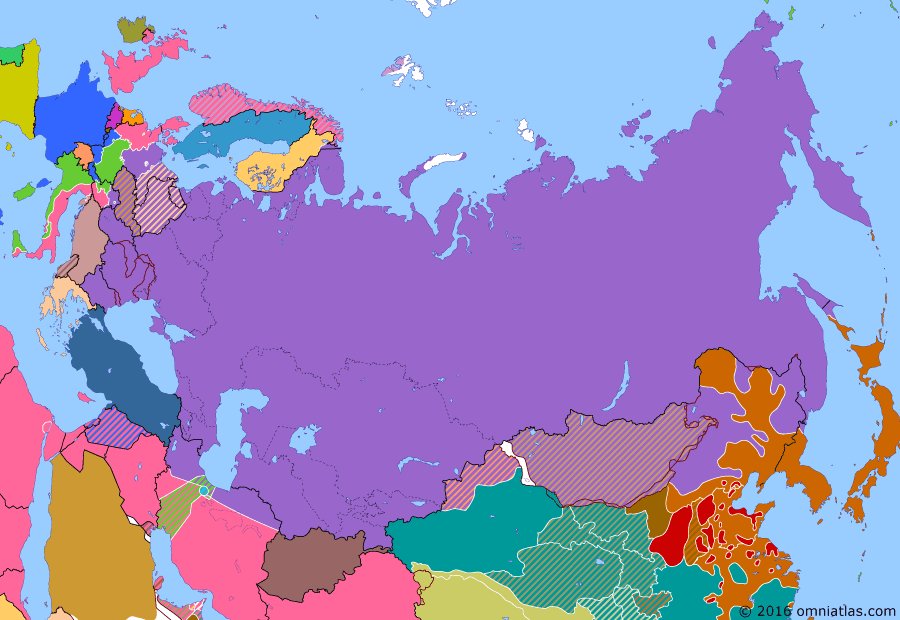Northern Eurasia 1945: Soviet Attack on Japan
15 August 1945
15 Aug 1945
Great Patriotic War: Germany at Bay
1816–1914 Late Tsarist Russia
1914–1918 Great War and the Revolution
1918–1921 Russian Civil War: The White Phase
1921–1927 Russian Civil War: The Green Phase
1927–1941 Soviet Union under Stalin
1941–1943 Great Patriotic War: Germany Invades
1943–1945 Great Patriotic War: Germany at Bay
1945–1991 Soviet Superpower
1991–pres Successors of the Soviet Union
Soviet Attack on Japan
Stalin had promised the Allies that he would attack Japan three months after Germany had been defeated. On August 9, he declared war as agreed, invading Manchuria, northern Korea, southern Sakhalin, and the Kurile Islands. In the same week, the Americans dropped atomic bombs on Hiroshima and Nagasaki. Faced with certain destruction, the Japanese surrendered on August 15.
